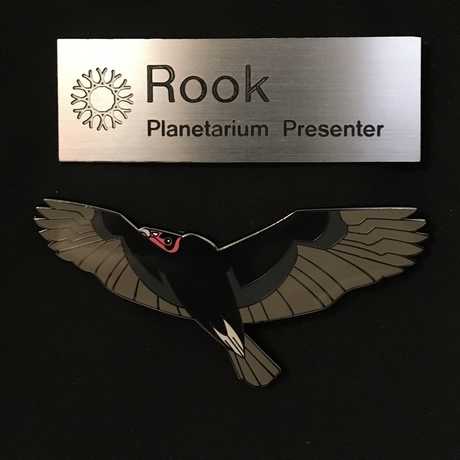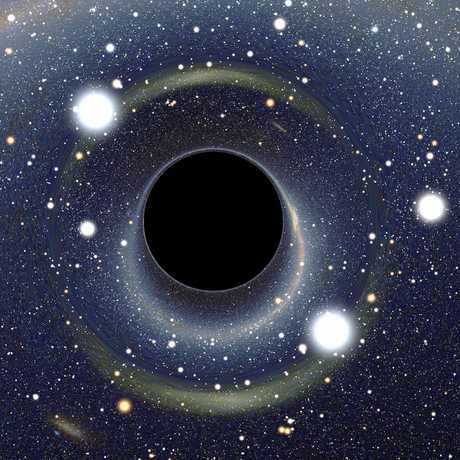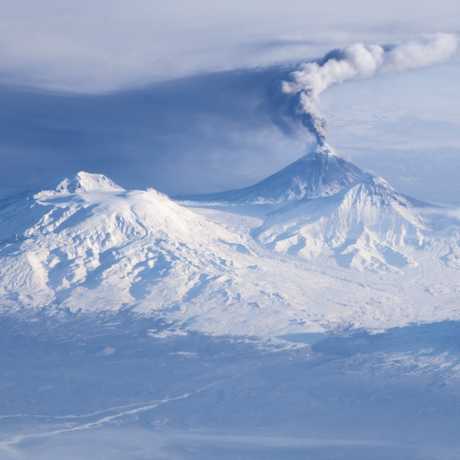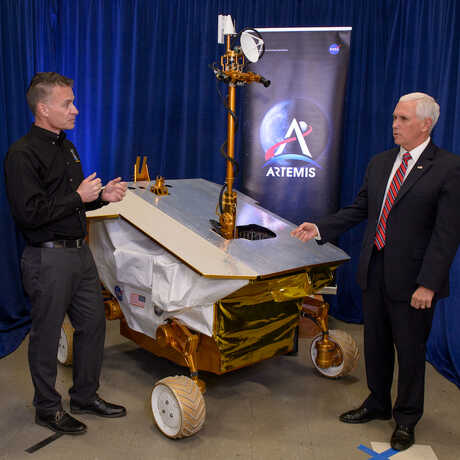M. Rook Fitts (Rook for short) is a presenter at the Morrison Planetarium. They specialize in connecting people to science using interactive media, and they know just enough about space to feel confident having opinions. In their spare time you can find them in a local park taking blurry pictures of birds.
Science News
Thoughts from a Planetarian: Space Invaders
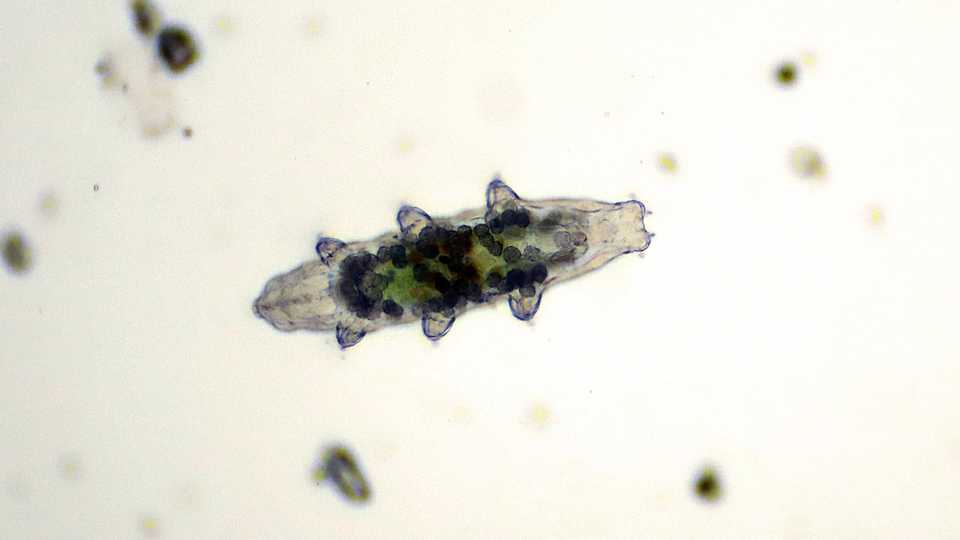
Microscopic animals such as tardigrades are known to weather extreme conditions and adapt to a wide variety of environments. Could tiny Earthlings like these be following us into space? Image: Philippe Garcelon
In the early morning of September 15, 2017, the planetary probe Cassini’s mission came to a dramatic close. Often the devices we send to explore the Solar System are only declared dead long after they’ve ceased to function, as in the case of rovers Spirit and Opportunity, or the probe Pioneer 10. But this was not the case for Cassini. Although its fuel supply had dwindled, at the end of its mission the probe could still function well enough to steer itself and transmit valuable data. Taking advantage of these remaining faculties, mission control set Cassini on a collision course with Saturn, where its high-speed plunge through the atmosphere tore the probe apart.
So why bring the mission to such a dramatic end, instead of allowing Cassini to function until it couldn’t anymore? Cassini was able to gather some incredible information during its final few moments in the Saturnian atmosphere, but that was only part of the reason for its fatal encounter with the planet. Throughout the course of its mission, Cassini also made pivotal discoveries about the frozen moon Enceladus and Saturn’s other satellites, revealing icy geysers and hidden oceans that might shelter extraterrestrial life. Life that could be deeply disrupted by a close encounter with a decommissioned probe. And so it was decided that Cassini would have to be disposed of, crashing into Saturn so that it wouldn’t be able to crash anywhere else.
The reason that a probe like Cassini has to be destroyed far from any potentially habitable worlds, while a rover like Spirit is allowed to come to rest forever on a planet that might still support life, comes down to planetary protection: the pursuit of preventing cross-contamination between Earth and any life we might encounter in space. It is exactly as hard as it sounds.
The idea found its first major foothold during the Apollo missions, when Earth itself became a likely destination for material from another world.
This history is explored at length in Michael Meltzer’s 2011 book, When Biospheres Collide. Unlike probes and rovers which retire in space, the Apollo astronauts were preparing to return back to Earth, bringing lunar material with them, either carefully stored as samples or scattered as dust on their clothes and equipment. At the time there was no way to know for sure what that lunar material might contain. The Moon might not be hospitable to the kinds of life found on Earth, but as discussed in my previous article, it’s still impossible to rule out life that lives by different rules altogether. And so NASA instituted planetary protection protocols and brought experts together to find a way to prevent cross-contamination, keeping the lunar samples as pristine as possible while also protecting Earth and its residents from any hazards those samples might present. Meltzer describes at length how astronauts were wrapped up in air-tight suits and placed in quarantine for weeks, while the samples were sealed in a vacuum chamber as scientists reached inside to conduct tests using a pair of wall-mounted pressurized gloves.
As Meltzer tells it, patience was tested, protective seals frequently leaked, and no Moon germs were discovered, allowing NASA to discontinue quarantine procedures after Apollo 14. However rocky these first attempts might have been, they nonetheless cemented planetary protection as a part of the space flight process. And just like space flight itself, planetary protection would evolve as new technology, destinations, and ideas emerged.
Modern missions to other worlds are now conducted at a distance, using artificial explorers that are never meant to return, and so much of the focus of planetary protection has shifted to preventing Earth contaminants from hitchhiking elsewhere. Our world boasts countless diverse microscopic residents, such as viruses, bacteria, and fungi, that cling stubbornly to any surface they happen to land on, and there are just as many diverse ways to try and scrub them off. Planetary protection measures often include assembling a spacecraft in a clean room (to prevent microbes from entering in the first place), liberal use of alcohol wipes, and dry heat sterilization that can reach every part of a spacecraft. But none of these methods are perfect: some parts of a spacecraft may be too intricate to clean by hand, or too fragile to expose to microbe-killing temperatures. There are also microbes on Earth that remain undiscovered and impossible to observe, so there’s no guarantee that even the most aggressive sterilization techniques will catch everything. Instead, these techniques are focused on lowering the risk as much as possible.
A spacecraft’s mission also plays a role in determining how high the risk for contamination is. A probe like Cassini, destined to spend its entire mission in the vacuum of space, wouldn’t have been decontaminated as rigorously as a rover like Spirit, meant to travel on the surface of a planet. But as Cassini’s data revealed, it can be hard to know in advance whether a particular piece of technology is going to come into contact with a biologically active area.
This is especially true when a mission doesn’t go to plan.
In When Biospheres Collide, Meltzer takes a moment to explore the case of the Mars Polar Lander, launched in 1999. A Martian lander intended to explore the planet’s potentially habitable ice caps would, of course, have to have its exterior thoroughly decontaminated. But what about the parts of the lander that would never be exposed, or never come into contact with the surface? Some such parts included sensors so delicate that they were impossible to touch, let alone clean. The decision was made to allow less rigorous cleaning of these areas, with the understanding that they would never come into contact with the Red Planet itself. The problem is that the lander didn’t land. Instead, like many Martian landers before it, it crashed, likely breaking into tiny contaminated pieces as it bounced across the ice. In a similar and more recent incident, a lunar lander named Beresheet is suspected to have spilled its payload of tardigrades all over its would-be landing site when it crashed into the Moon’s surface.
Could these travelers have survived such a violent arrival onto another world? Potentially, yes. In one particularly tragic disaster, the Columbia space shuttle burned up as it attempted to reenter the atmosphere of Earth in 2003. The shuttle’s seven-person crew was killed, but some of its non-human passengers, including a thermos of roundworms, managed to survive the crash and were recovered several days later. As for the tardigrades, they would have to endure the moon in a dehydrated state called cryptobiosis, but these little critters can last for decades this way, surviving some incredibly harsh conditions. During that time they could hypothetically get stirred into Moon dust, picked up by future lunar explorers, and emerge from their stasis as soon as they enter a more hospitable environment again.
The real contamination risk posed by any surviving lunar tardigrades is probably extremely low, but they’re a good example of how rapidly spaceflight is evolving, and the strange new problems that are emerging on the way. A recent independent review of NASA’s Planetary Protection program highlighted some of the challenges the field will have to meet as plans to collect samples and send humans to Mars move forward. Keeping issues like these in mind as we talk about spaceflight is getting more and more crucial if we want to ensure that wherever we Earthlings go, we come in peace.
Read the first part of Rook's Thoughts on this subject here.
About the Planetarian
